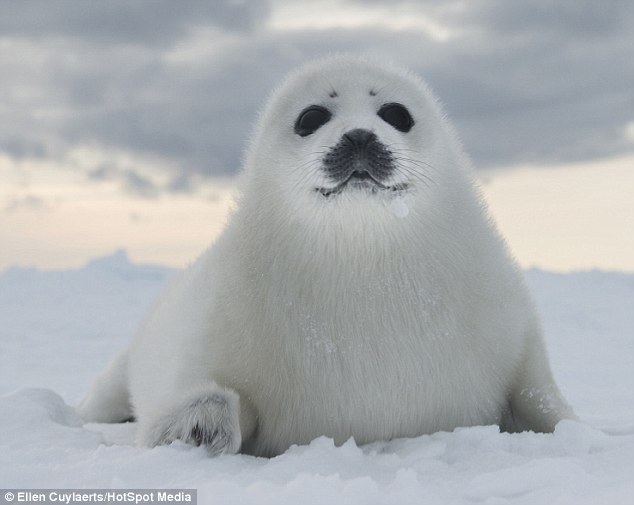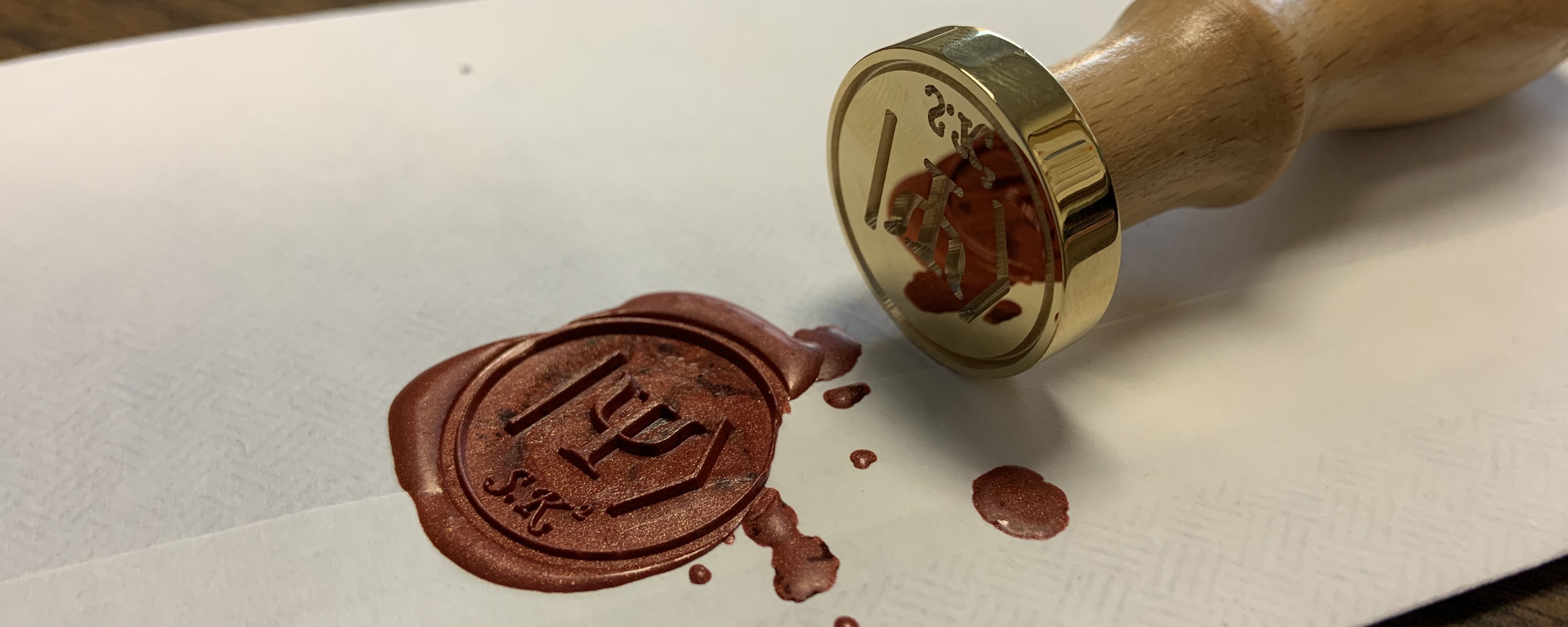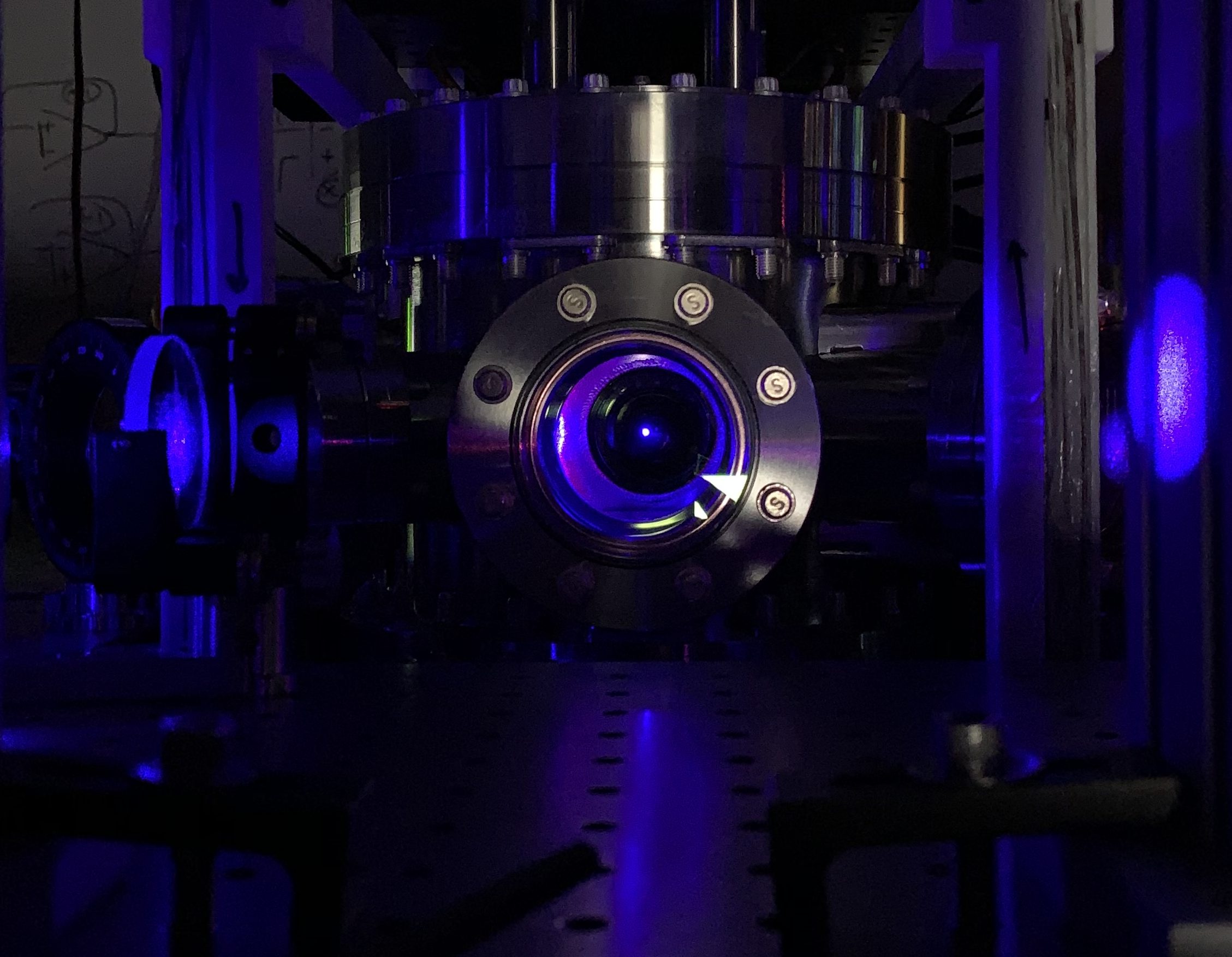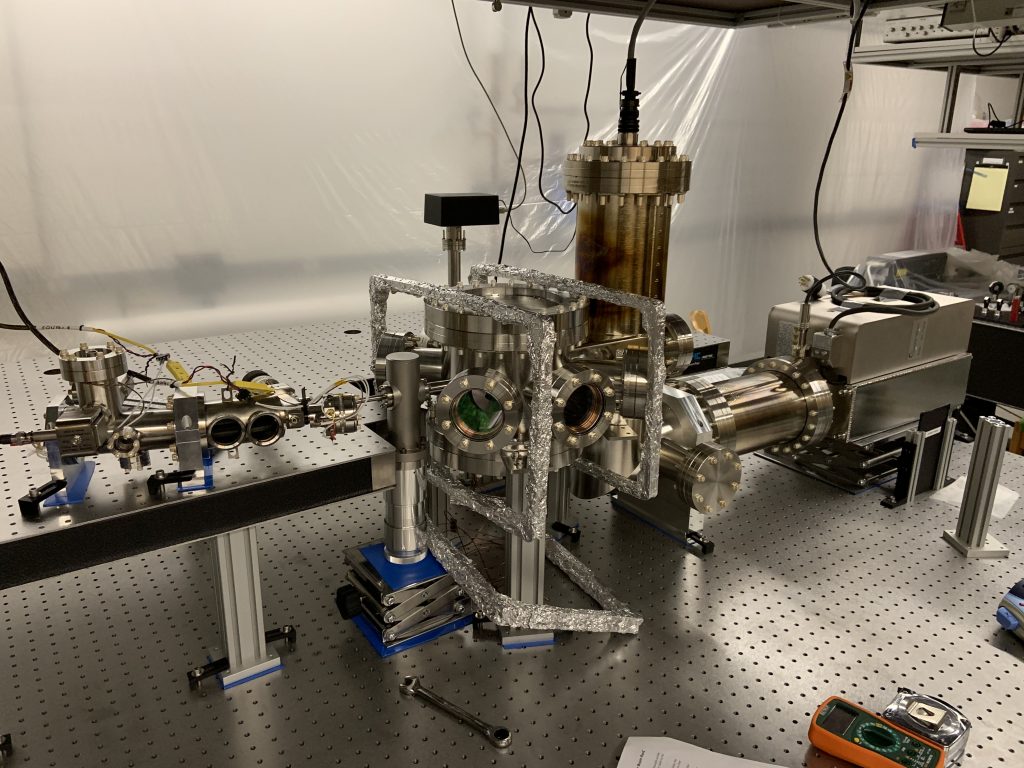Congratulations to Matt, Aedan, and Sam, whose paper “State-dependent phonon-limited spin relaxation of nitrogen-vacancy centers” has now been posted to the arXiv!
Experimental Results
Strontium atoms trapped in a crystal of light
Xin, Jack, Haoran, and Brett have successfully trapped strontium atoms in an optical lattice for the first time! (The first time in our lab, this is already a very well established technique in experimental atomic physics.) The strontium atoms are held in a standing wave of light formed by two counter-propagating laser beams, which forms a simple one-dimensional crystal of light. Below is a picture taken with a CCD camera of the shadow cast by these atoms on a laser beam.

This is a major milestone on the way to building a working optical lattice atomic clock.
Aedan and Matt’s paper published in Physical Review Applied!
Congratulations to Aedan and Matt, whose paper “Fast relaxation on qutrit transitions of nitrogen-vacancy centers in nanodiamonds” has now been published online in Physical Review Applied! For those who don’t have access to the journal, a pre-print can be found on the arXiv here: https://arxiv.org/abs/1910.10813.
And if you prefer to get your physics fix in doses of 140 characters or less, here’s a tweet from the department communications director Sarah Perdue summarizing our paper (based off a much longer synopsis provided by Shimon):
Shimon’s “quantum seal” paper with Shelby Kimmel published in Physical Review A!
Shimon’s paper with co-author Professor Shelby Kimmel of Middlebury College, “No-go bounds for quantum seals,” was published online in Physical Review A today. The paper is a theoretical analysis of the feasibility of “quantum seals.” And in case you’re wondering, no, this isn’t just an aquatic version of Schrödinger’s cat… The kind of seals we’re talking about here are the quantum version of the wax seals used to secure letters and packages, not the seals that bark and eat sardines.

In our paper we analyze whether it’s possible to use quantum mechanics to encode a message such that the receiver of the message can read it without additional communications with the sender, but the sender can tell whether or not the receiver (or someone else) has read the message and broken the “quantum seal.” While this at first might seem doable because of the disturbances measurements tend to create in quantum mechanics, we build on previous work to prove that it is sadly impossible to make a quantum seal that both gives the receiver of the message a high probability of successfully reading it, and the sender a high probability of telling if the seal has been broken or not.

Aedan and Matt’s paper posted on the arXiv!
Congratulations to Aedan and Matt, whose paper “Fast relaxation on magnetic-dipole-forbidden spin transitions of nitrogen-vacancy centers in nanodiamonds” has now been posted to the arXiv!
One isotope, two isotopes, three isotopes, four…
In the video linked to below, we trap and cool all four stable isotopes of strontium (88, 87, 86, and finally 84) in quick succession. (The delay between isotopes is purely for the purposes of the video, and can be shortened considerably.)
Video of loading strontium isotopes
This capability will allow us to perform precision differential measurements of the isotope shifts of the strontium clock transition, and will also enable the use of both the bosonic 88-Sr and fermionic 87-Sr isotopes to characterize clock systematics in our apparatus.
The Kolkowitz lab becomes the (second) coldest place in Wisconsin!
Congratulations to Xin, Megan, Brett, Kelsey, and Haoran, who successfully trapped strontium in a magneto-optical trap for the first time on Monday evening, making the center of our UHV chamber the second* coldest place in Wisconsin! In the picture below, the glowing blue ball at the center of the round vacuum window is a cloud of strontium-88 atoms cooled to ~1/1000th of a degree above absolute zero using laser cooling, and held levitating in place by a combination of laser light and large magnetic field gradients.

This represents a major milestone along the way towards our goal of building a new kind of optical lattice atomic clock that we will use to perform tests of fundamental physics, develop new applications of ultra-precise optical clocks, and explore novel ways to further enhance the performance of these remarkable instruments.
*In case you’re wondering, the coldest place in Wisconsin is currently right down the hall from us in Mark Saffman’s labs, where his rubidium and cesium atoms are laser-cooled to even lower temperatures. But we’re hot (or is it cold…?) on their heals, and will most likely overtake them as the record holders once we implement a second stage of narrow-line laser cooling. We can also hold our heads high and stake our place in history as the first group to laser cool and trap strontium atoms (or for that matter any alkaline-earth or alkaline-earth-like atom) in Wisconsin.
Strontium science chamber ultra-high-vacuum bakeout completed!
The science chamber for the strontium optical lattice clock high-temperature bakeout is now officially over, and we have achieved a vacuum of ~2e-12 Torr! We except this to give us background-gas-limited strontium atom lifetimes of >100 seconds in our chamber.

The next step will be to install the magnetic field coils for the magneto-optical-trap.